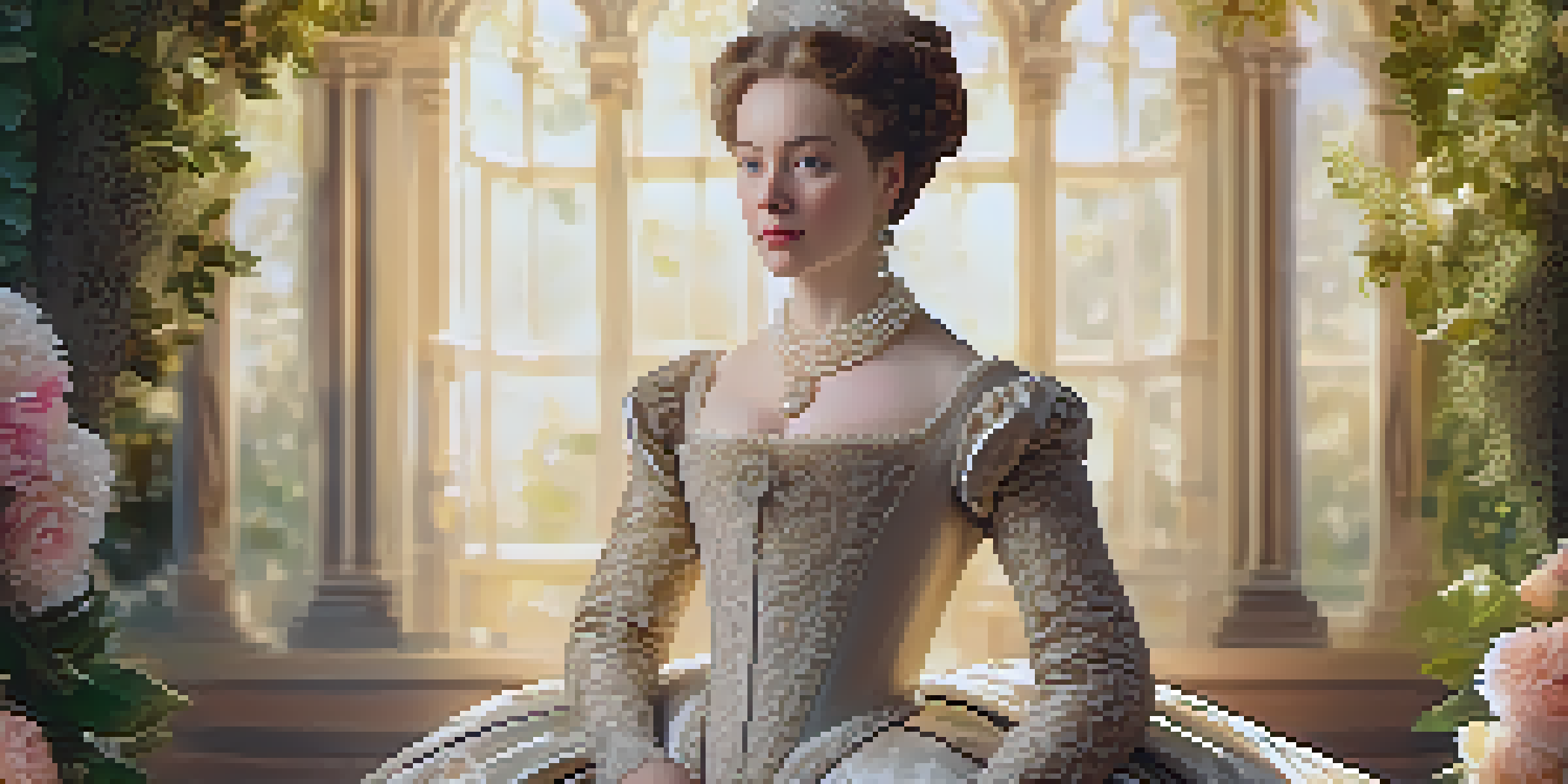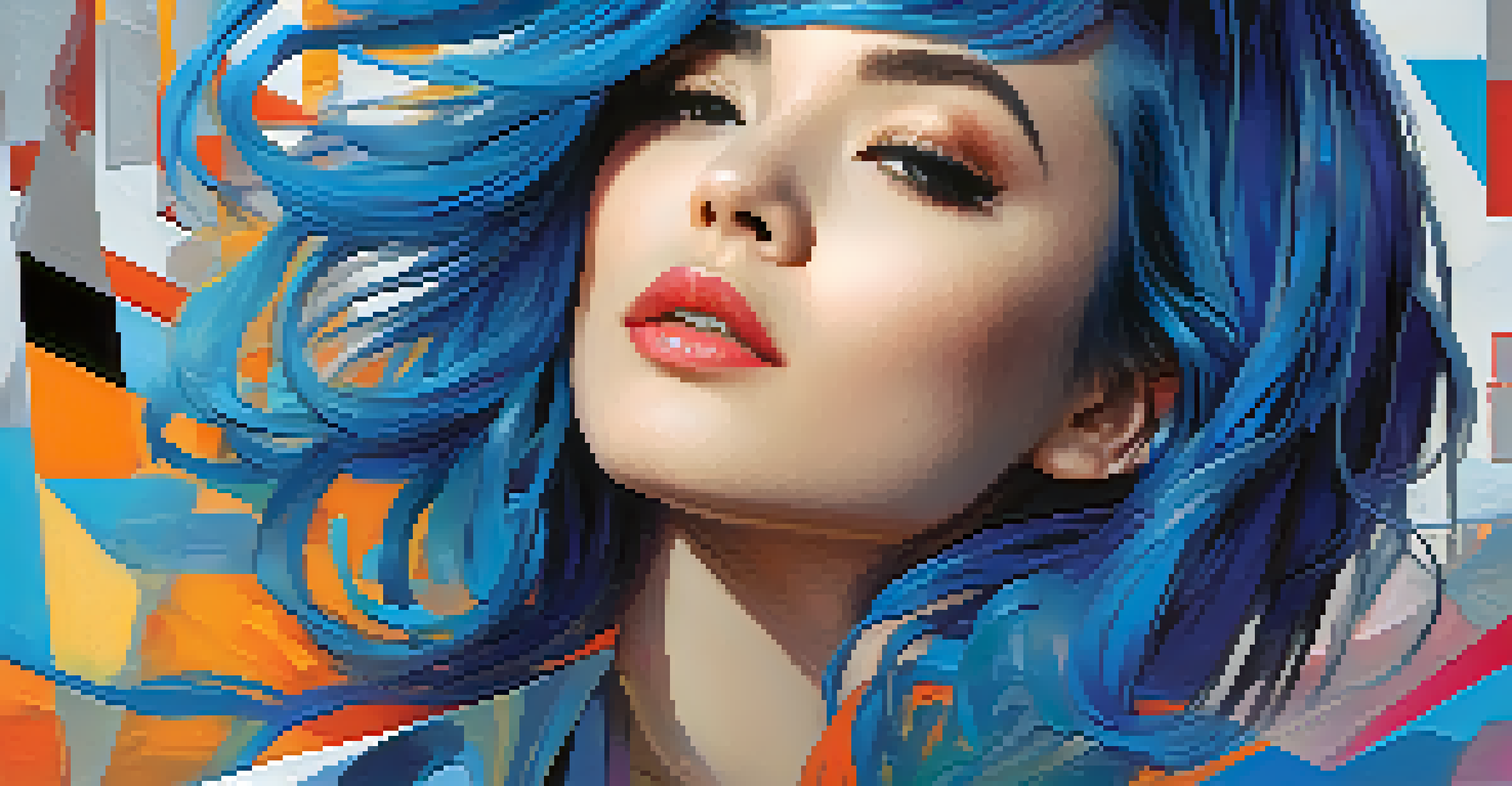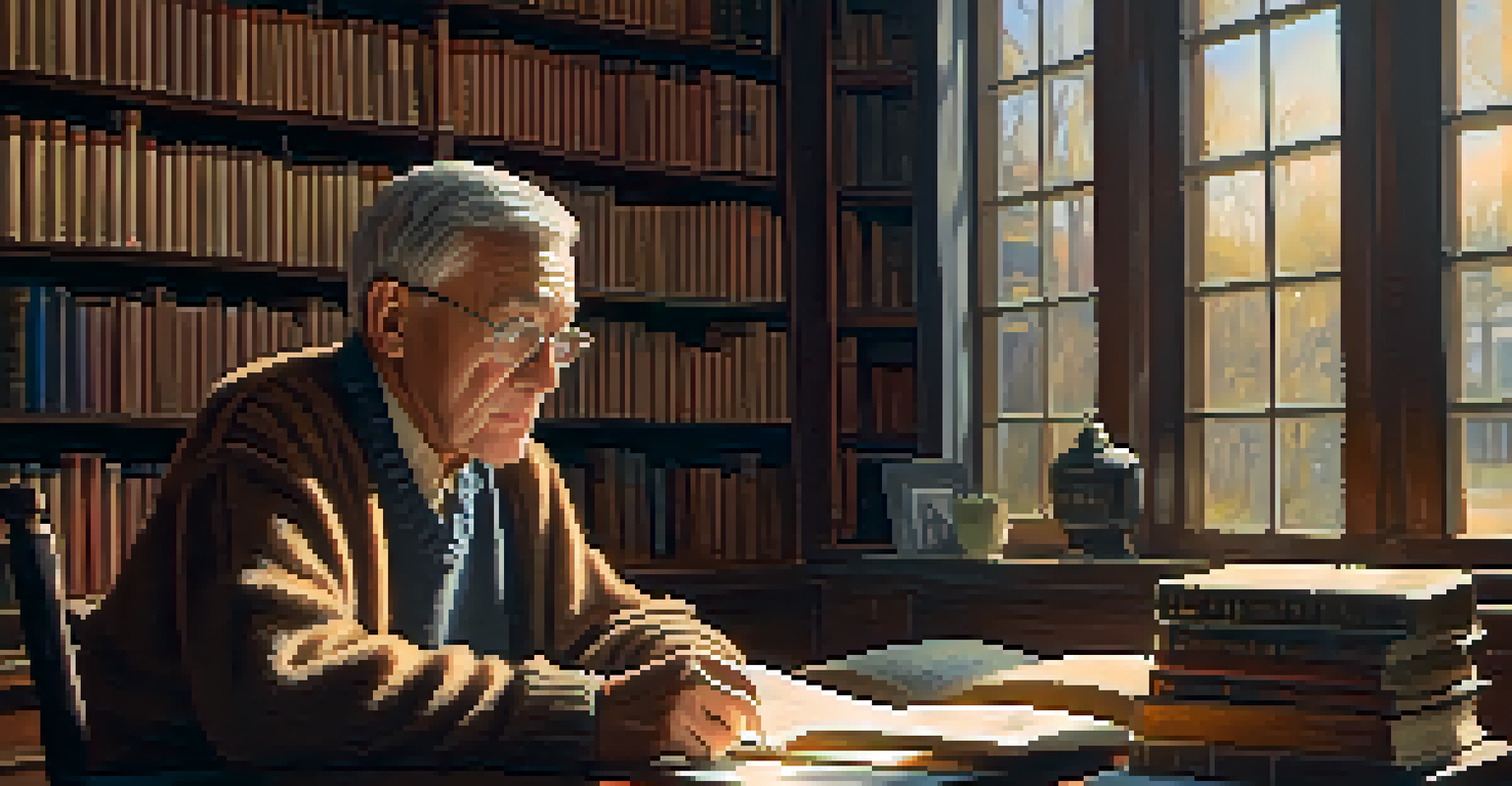The Evolution of Portraiture: From Classical to Modern Art

The Origins of Portraiture in Ancient Civilizations
Portraiture began in ancient civilizations such as Egypt and Greece, where the purpose was often to commemorate the deceased or celebrate rulers. These early portraits were not just artistic expressions; they played a vital role in religion and politics. For instance, the Egyptian tomb paintings were designed to ensure a successful afterlife for the deceased, featuring their likenesses meant to honor them eternally.
Every portrait that is painted with feeling is a portrait of the artist, not of the sitter.
In Greece, portraiture evolved to reflect individuality, with artists like Praxiteles focusing on the human form and emotions. The introduction of realism helped create a connection between the subject and the viewer, emphasizing the unique traits of individuals. This shift laid the groundwork for future developments in portraiture, showcasing that art could convey personal stories.
The importance of these early portraits extends beyond mere representation; they also served social and political functions. They were symbols of power and status, often used to communicate lineage and authority. This blend of artistry and function would continue to influence portraiture throughout history.
Renaissance: The Rise of Individualism in Portraits
The Renaissance marked a significant turning point in the evolution of portraiture, where artists began to explore realistic depictions of human emotion and individual character. This period celebrated humanism, focusing on the individual rather than divine or royal subjects. Artists like Leonardo da Vinci and Raphael brought a new depth to portraiture, showcasing not just the physical likeness but also the personality of their subjects.

Techniques such as chiaroscuro (the use of strong contrasts between light and dark) were employed to create depth and realism. Da Vinci's 'Mona Lisa' is a prime example, where the subject's enigmatic expression invites viewers to ponder her thoughts and feelings. This emphasis on psychological complexity set a new standard in portrait art.
Portraiture's Historical Significance
From ancient Egypt to the Renaissance, portraiture has served not only as artistic expression but also as a means of social and political commentary.
Additionally, the use of oil paints allowed for richer colors and finer details. Portraits became more than mere likenesses; they transformed into windows into the souls of individuals, reflecting their inner lives and societal roles. This era's innovation laid the foundation for future artistic exploration in portraiture.
Baroque Portraits: Drama and Emotion on Canvas
As art moved into the Baroque period, portraiture took on a more dramatic flair that reflected the turbulent times. Artists like Rembrandt and Velázquez captured not only the physical attributes of their subjects but also their emotional states and social standings. The use of bold colors, dynamic compositions, and theatrical lighting created a sense of movement and vitality.
A portrait is not a likeness. The moment an emotion or fact is transformed into a picture it is no longer a fact but an opinion.
Rembrandt’s self-portraits, for instance, reveal a deep introspection and vulnerability, showcasing the artist’s personal journey through his expressions. This emotional depth resonated with viewers, making the portraits feel alive and relatable. Velázquez’s 'Las Meninas' exemplifies this approach, blurring the lines between reality and art, inviting viewers into a complex narrative.
The Baroque period also saw an increased focus on the status and wealth of subjects, often showcasing luxurious clothing, intricate backgrounds, and opulent settings. These elements highlighted the social dynamics of the time, further enhancing the storytelling aspect of portraiture. This era firmly established portraits as a means of both personal expression and social commentary.
The 18th Century: Neoclassicism and Idealism
The 18th century ushered in Neoclassicism, a movement that sought to revive the ideals of ancient Greece and Rome. Portraiture during this period emphasized clarity, simplicity, and proportion, often portraying subjects in formal attire with an air of dignity. Artists like Jacques-Louis David aimed to create timeless representations, elevating their subjects to heroic status.
David's work, such as 'Napoleon Crossing the Alps,' exemplifies this idealism, blending historical narrative with contemporary figures. The focus shifted from individual emotional expression to embodying virtues like heroism and patriotism. This approach not only reflected the cultural values of the time but also served to inspire civic pride among viewers.
Evolution of Techniques and Styles
The transition from realism in the Renaissance to the abstract forms of the 20th century illustrates the dynamic evolution of portraiture in response to cultural shifts.
However, this era also laid the groundwork for a shift towards Romanticism, where individual emotions and the sublime nature of the human experience would take center stage. The transition from Neoclassicism to Romanticism highlighted the evolving nature of portraiture, paving the way for future explorations of identity and personal expression.
Romanticism: Emotive Expressions and Personal Narratives
Romanticism emerged as a reaction against the rigid structures of Neoclassicism, embracing emotion, nature, and individualism. Portrait artists began to explore the inner lives of their subjects, capturing raw emotion and distinct personalities. This shift can be seen in the works of artists like Eugène Delacroix and Francisco Goya, whose portraits conveyed intense feelings and personal stories.
Delacroix's use of color and movement transformed traditional portraiture into a vibrant expression of the human experience. His subjects were often depicted in dramatic poses, exuding passion and intensity, which resonated deeply with viewers. Goya’s portraits, on the other hand, offered a more intimate glimpse into the lives of his subjects, often revealing their vulnerabilities and complexities.
This era also saw the rise of the individual as a subject worthy of artistic exploration, moving away from the traditional portrayal of nobility. The emphasis on personal narratives allowed artists to connect with audiences on an emotional level, transforming portraiture into a powerful medium for self-expression and societal reflection.
The 19th Century: The Birth of Modern Portraiture
The 19th century marked a pivotal moment in the evolution of portraiture with the advent of photography. This new medium challenged traditional painting techniques, as portraits could now be captured in an instant. Artists like John Singer Sargent and Gustav Klimt began to experiment with styles that blended realism with innovative techniques, pushing the boundaries of portraiture.
Sargent's portraits are renowned for their fluid brushwork and ability to capture the essence of his subjects, often showcasing the interplay of light and shadow. Klimt, with his decorative style and use of gold leaf, offered a fresh perspective on portraiture, emphasizing ornamentation alongside human likeness. These developments reflected a broader cultural shift towards modernity and individual expression.
Modern Portraiture and Identity
Today, portraiture continues to adapt, incorporating technology and diverse perspectives to reflect contemporary issues and the complexities of human identity.
Moreover, the rise of the middle class expanded the audience for portraiture, as more individuals sought to capture their likenesses for posterity. This democratization of portraiture allowed a diverse range of subjects to be represented, reflecting the complexities of society during this transformative era. The merging of traditional techniques with new innovations set the stage for the modern art movement.
20th Century to Today: Diverse Styles and New Perspectives
The 20th century brought an explosion of styles and movements that reshaped portraiture into something radically different from its predecessors. From Expressionism to Cubism, artists explored new ways to represent the human figure, often focusing on abstract forms and emotional interpretations. Pablo Picasso and Andy Warhol were at the forefront of this revolution, challenging conventions and expanding the definition of portrait art.
Picasso's fragmented representations in works like 'Weeping Woman' convey the turmoil of the human experience, while Warhol's pop art approach turned celebrity culture into a form of portraiture that questioned authenticity and consumerism. This shift highlighted the impact of societal changes and the role of media in shaping our perceptions of identity and self.

Today, portraiture continues to evolve, incorporating technology and new mediums such as digital art and social media. Artists are now able to explore identity in even more diverse ways, reflecting contemporary issues and cultural dialogues. The evolution of portraiture from classical to modern art demonstrates not only artistic innovation but also the ongoing quest to understand and represent the complexities of human nature.